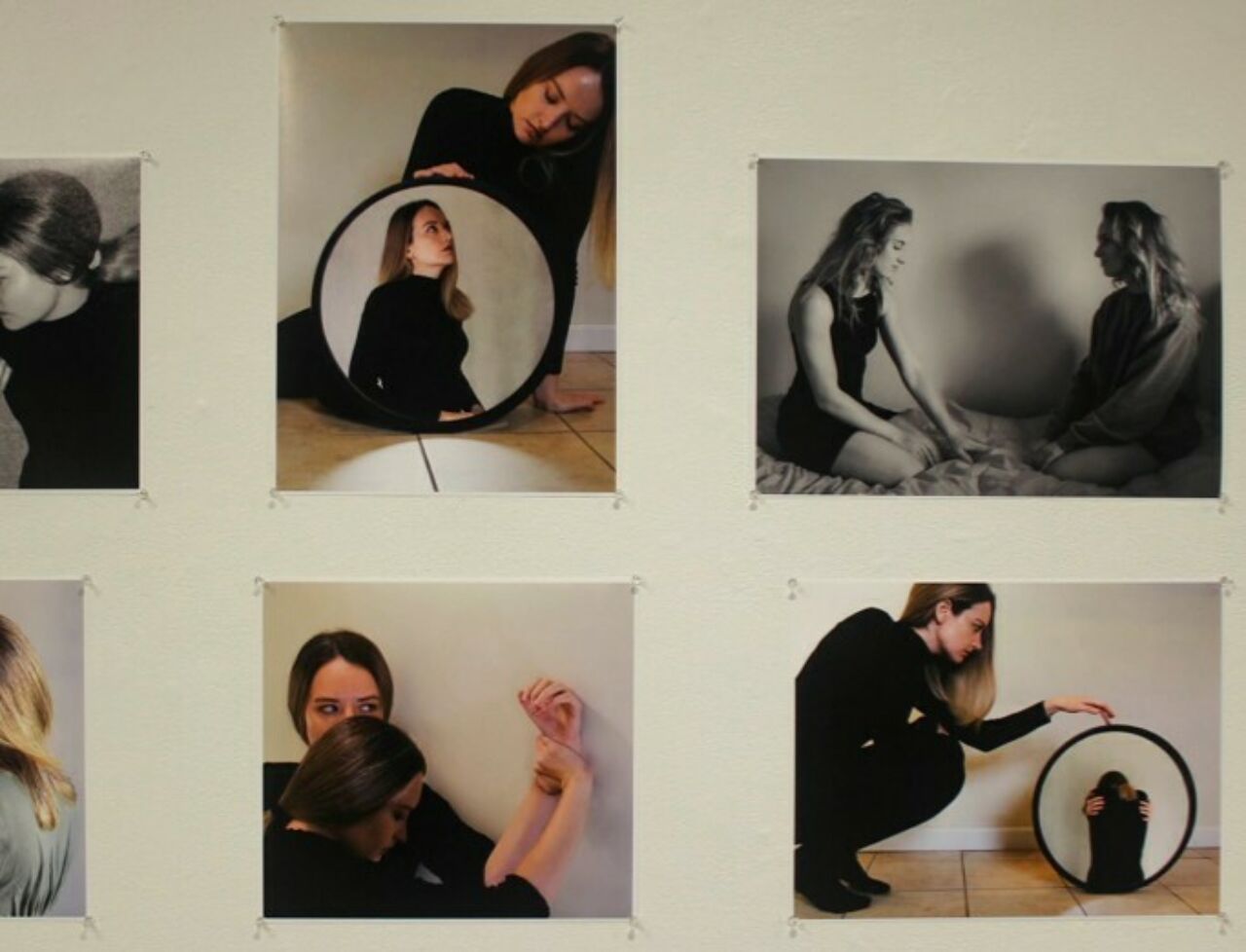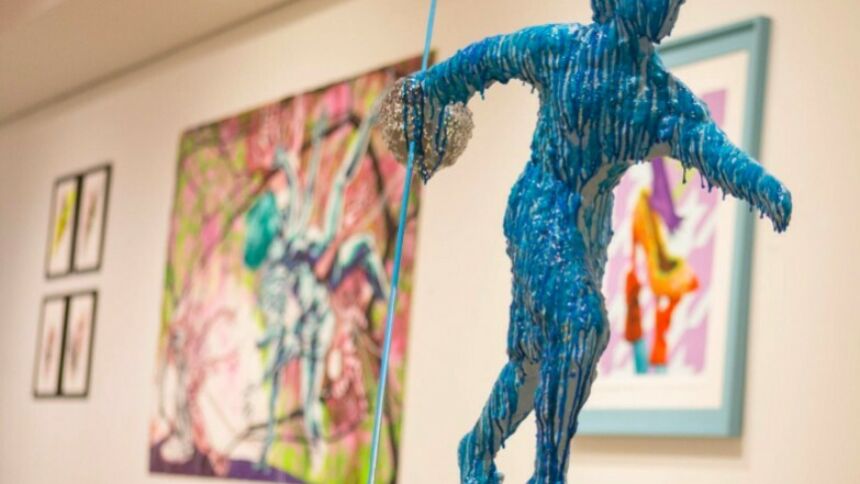ART 1: Introduction to the Visual Arts
Art 1 is a course on understanding and interpreting art and serves as an introduction to the visual arts. The material follows an interdisciplinary approach to the practice of the visual arts, examining the social, cultural, historical, and aesthetic implications of studio activity.This course is organized around six central topics: Art as Expression, Art as Cultural Narratives, Form and Content, Two-Dimensional Art, Three-Dimensional Art, and Writing About Art.
Delivery: Web
Instructor: Zena Tredinnick-Kirby
Gen Ed: GA
ART 10: Introduction to Visual Studies
ART 10 is an introductory art appreciation course created for students without any artistic background. This course introduces students to various art movements, cultural influences, artistic genres, artists, and their artwork. The main emphasis of the course is to teach students hands-on studio arts techniques as they conduct personal research and explore their own creativity.
Delivery: Web
Instructor: Anna Divinsky, Natalia Kravchenko, Melissa Leaym-Fernandez
Gen Ed: GA
ART 20: Introduction to Drawing
ART 20 is intended as a general survey of the art of drawing for non-majors. As a studio offering, emphasis is placed on hands-on studio activities, which promote visual literacy and on the various conventions used in drawing. Students will be given the opportunity to briefly explore many of the traditional materials of drawing, including pencil, charcoal, conte, ink and ink wash, pastel, as well as experimental tools.
Delivery: In Person, Hybrid, Web
Instructor: Courtney Redding, Melissa Lesher, Gulia Huber, Megan Gottfried
Gen Ed: GA
ART 30: Introduction to Sculpture
This 3-credit course meets the Bachelor of Arts degree requirements. ART 30 is intended as a general survey of the art of sculpture for non-majors. As a studio offering, emphasis is placed on hands-on studio activities, which promote visual literacy and sensitivity to the various sculptural conventions. Students are given the opportunity to briefly explore many of the traditional materials of sculpture including those that are used in modeling and replication, subtractive processes, and fabrication. As well, slide presentations, studio visits and museum critiques will augment studio exercises to facilitate a greater awareness of the cultural context in which the art of sculpture functions.
Students enrolled in this course will be required to participate in the following active learning components:1. Studio Assignments: a) Modeling and Replication b) Subtractive Processes c) Fabrication Assignment2. Creating a social and historical context for sculpture making through slide presentations, studio visits and museum critiques: a) Slide presentations: students will be asked to consider the concepts of their creative projects in relationship to the sculptural works of historical and contemporary artists in order to understand the ways in which the three dimensional aspects of sculpture convey meaning. b) Studio visits: Students will visit the personal studios of local artists to learn how professional artists develop best practices as related to the three basic approaches to rendering sculptural form outlined above. Additionally, they will explore and discuss with these artists the concepts expressed in their sculptural works. c) Museum critiques: Museum visits will enable students to learn how to engage and respond to actual works of art as compared with those that they experience as slide and printed representations. The role of museums and galleries in contemporary art practice will also be discussed. Grading and evaluation: Students’ sculptural projects will be evaluated according to the following criteria: 1) the uniqueness of the visual concepts developed in their studio assignments; 2) the strength of their visual compositions-their ability to communicate concepts clearly; 3) the quality of their craftsmanship-an effective use of materials and procedures and commitment to the studio assignments-the effort expended on each project; 4) Their willingness to participate in critique sessions-a thoughtful and informed interpretation of visual ideas in sculptural works produced by them in class as well as those discussed during slide presentations, studio visits, and museum critiques.
Delivery: In Person
Instructor: Mengqi Xu
Gen Ed: GA
ART 40: Introduction to Printmaking
ART 40 is intended as a general survey of the art of printmaking for non-majors. As a studio offering, emphasis is placed on hands-on studio activities, which promote visual literacy and sensitivity to the various printmaking conventions. Students are given the opportunity to briefly explore the various approaches to printmaking, which may utilize some or all of the following: screenprinting, relief, intaglio, lithography, and others.
Delivery: In Person
Instructor: Jean Sanders
Gen Ed: GA
ART 50: Introduction to Painting
ART 50 is intended as a general survey of the art of painting for non-majors. As a studio offering, emphasis is placed on hands-on studio activities, which promote visual literacy and sensitivity to the various conventions used in the discipline of painting. Students are given the opportunity to briefly explore the various approaches to creating visual images by applying various painting materials, techniques, and concepts.
Delivery: In Person
Instructor: Melissa Lesher
Gen Ed: GA
ART 80: Introduction to Ceramics
Delivery: In Person
Instructor: Emily Wright, Laura Dirksen
ART 100: Concepts and Creation in the Visual Arts
ART 100 is intended as an introduction to the concepts underpinning artistic creation. Through lectures and studio work, students will explore relationships between artistic processes and in daily life. The objective of the course is to develop in the student both an appreciation and understanding of contemporary art through an examination of art and contemporary social, cultural, and political issues surrounding artistic practice.
Delivery: By Appointment
Instructor: William Wellman
Gen Ed: GA
ART 211Y: Introduction to Digital Art and Design Criticism
An introduction to the language, aesthetics, and cultural impacts of digital art and design in contemporary society.
Delivery: Web
Instructor: Eduardo Navas
Gen Ed:


